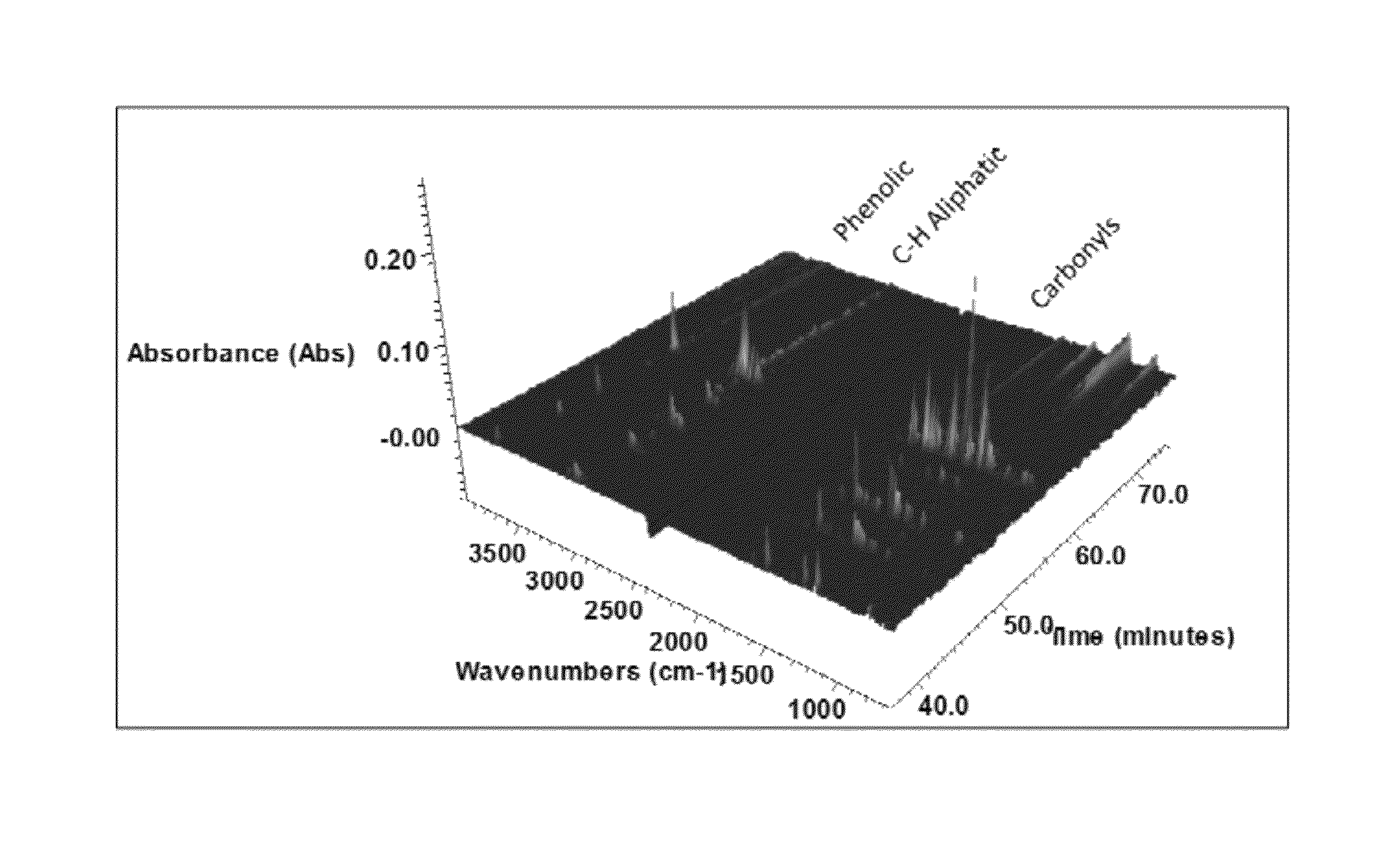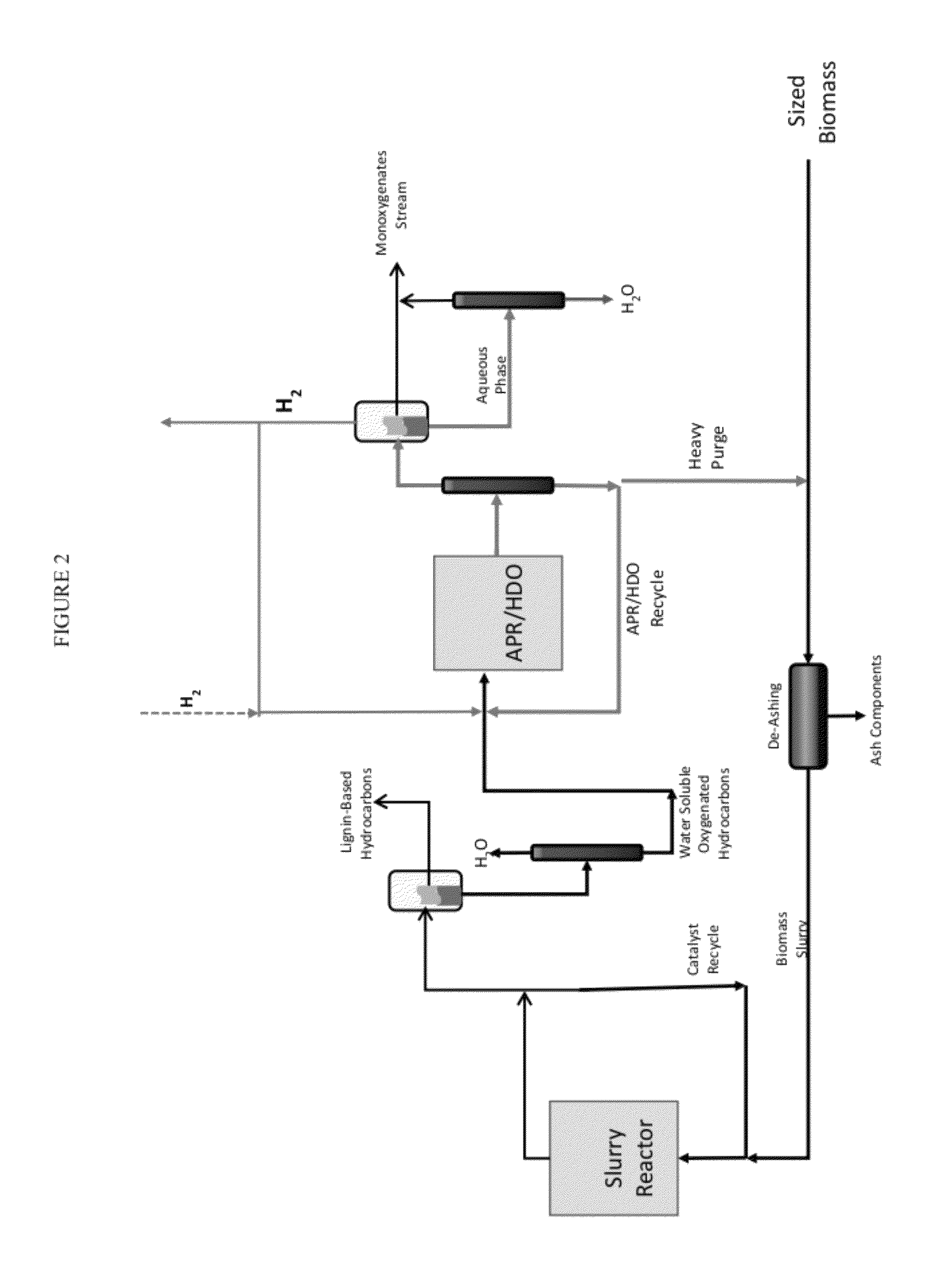Solvolysis of biomass to produce aqueous and organic products
a technology of biomass and aqueous solution, applied in the direction of glucose production, fatty oil/fat refining, hydrocarbon oil treatment products, etc., can solve the problem of no cost-effective process currently available for efficiently converting cellulose, hemicellulose, and lignin
- Summary
- Abstract
- Description
- Claims
- Application Information
AI Technical Summary
Benefits of technology
Problems solved by technology
Method used
Image
Examples
example 1
[0109]A preliminary deconstruction trial was conducted using a mixture of bioreforming organic phase products. The solvent was composed of 60 wt % bioreforming organic phase materials and 40 wt % deionized water. A biomass slurry having a biomass concentration of 5 wt % sugarcane bagasse in solvent was reacted over a period of two hours at a temperature of 180° C. in an autoclave reactor. The reaction resulted in 40% conversion of the sugarcane bagasse to organic and aqueous phase products, with low lignin content fibers as residual solids. The visible delignification effects indicated that the complex organic mixture from the bioreforming process contains compounds useful as a highly efficient deconstruction solvent.
example 2
[0110]Experimental results of initial biomass deconstruction using benzene, toluene, and 4-methyl-2-pentanone are shown in FIG. 3. Reaction conditions were 10% bagasse, 170° C., 500 psi N2, 30 min heating, 30 min retention. Solvent was mixed with water to give the target weight percent as depicted in FIG. 3. With the high concentration solvent, some of the lignin was deconstructed, producing liquid form products.
example 3
[0111]A deconstruction trial was conducted using APR aqueous products, the major compounds of which are shown in FIG. 4, as a solvent to liquefy lignin residue derived from a separated enzymatic hydrolysate of corn stover. 10.0 g of lignin was loaded in a batch reactor with 100 g of APR aqueous products. The reactor was sealed and pressurized to 101.6 psi (at room temperature) with nitrogen and stirred at 800 RPM. The slurry was heated to 190° C. (at pressure of 330 psi) and soaked for 90 minutes. Lignin was 100% liquefied at the end of experiment producing liquid phase biomass hydrolysate, indicating that the APR aqueous products contains compounds useful as a highly efficient deconstruction solvent.
PUM
| Property | Measurement | Unit |
|---|---|---|
| deoxygenation pressure | aaaaa | aaaaa |
| deoxygenation pressure | aaaaa | aaaaa |
| weight percent | aaaaa | aaaaa |
Abstract
Description
Claims
Application Information
 Login to View More
Login to View More - R&D
- Intellectual Property
- Life Sciences
- Materials
- Tech Scout
- Unparalleled Data Quality
- Higher Quality Content
- 60% Fewer Hallucinations
Browse by: Latest US Patents, China's latest patents, Technical Efficacy Thesaurus, Application Domain, Technology Topic, Popular Technical Reports.
© 2025 PatSnap. All rights reserved.Legal|Privacy policy|Modern Slavery Act Transparency Statement|Sitemap|About US| Contact US: help@patsnap.com



